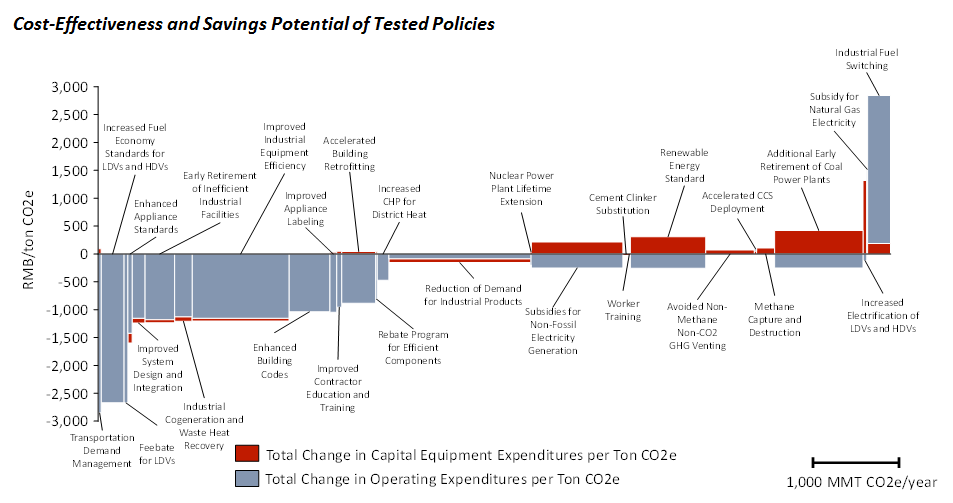July 2016
Which climate and energy policies can most cost-effectively drive down China’s carbon emissions? Today, China’s National Center for Climate Change Strategy and International Cooperation (NCSC), China’s Energy Research Institute (ERI), and Energy Innovation will release the results of their joint research aiming to answer this very question.
Together, we have built a system dynamics model to assess the combined effects of 35 climate, energy, and environmental policies on a variety of metrics, including CO2 and PM2.5 emissions, use of various fuels, cash flow changes, and monetized social benefits from avoided public health impacts and climate damages. With the model in hand, we tested more than 10,000 scenarios, seeking policy combinations that could meet China’s emissions goals cost-effectively. We present two of those policy scenarios (plus a reference scenario and a theoretical scenario based on the strongest internationally observed policies) in the final report.
The most important conclusion from this analysis is that China can peak emissions by or around 2030 using a set of well-known policies, and the transition will be cost-effective and economically beneficial with large public health benefits. According to the research, CO2 emissions peak in 2029 at 10,977 million metric tons (MMT) of CO2 in the Low Carbon Scenario (LC), while CO2 emissions peak in 2022 at 9,855 MMT in the Accelerated Low Carbon Scenario (ALC).
The modeled policies are grouped into four categories in the research: Clean energy, efficiency, demand management, and direct emissions abatement. The CO2 reductions contribution of these four categories is analyzed for purposes of comparison. In the LC scenario, efficiency policies are the primary driver of emissions reductions, contributing 51% of the reduction. In the ALC scenario, efficiency policies and clean energy policies are both significant contributors, together accounting for 90% of the reduction.

Additionally, the model tests for the cost-effectiveness of different policies. The most cost-effective policies include fuel economy standards for light-duty vehicles (LDVs) and heavy-duty vehicles (HDVs), early retirement of industrial sites, industrial energy efficiency standards, building codes, and industrial product demand reduction.

Top Policy Recommendations
The results of this research show that several policies should be optimized and enhanced to drive down China’s carbon emissions:
- Continue advancing China’s national carbon pricing program, with a target price of at least RMB60/ton and auctioning of permits rather than free allocation.
- Increase the electricity sector’s non-fossil capacity targets, and couple this with an increased production-based renewable energy standard.
- Restructure China’s industry sector to move away from heavy manufacturing.
- Increase the stringency of China’s building codes by making MOHRUD One Star the new minimum.
- Reduce venting of f-gases in line with the 2015 U.S.-China agreement.
The full report contains more information about these top policies, including their quantitative impacts as well as how to design them for success. The report’s Executive Summary as well as Energy Innovation’s presentation at the launch event in Beijing are now available online.
